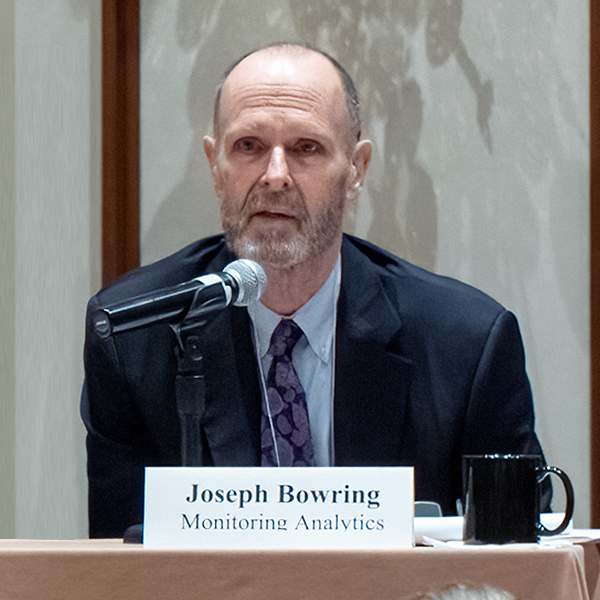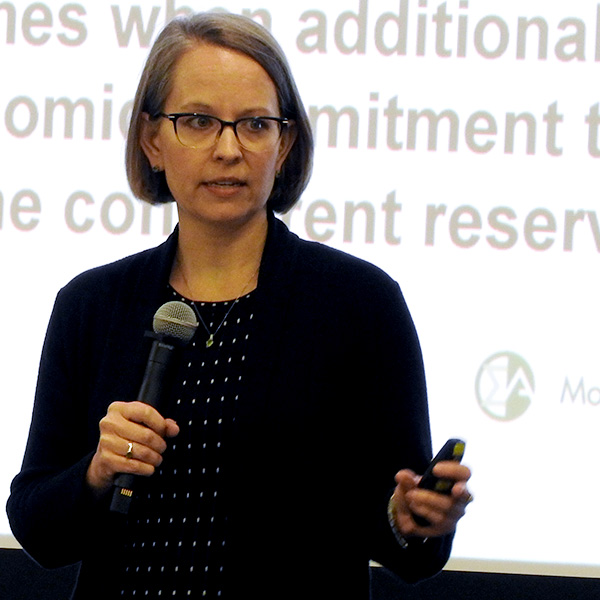Voltus Withdraws Issue Charge on DR Offer Parameters
VALLEY FORGE, Pa. — Voltus on Wednesday withdrew an issue charge at the PJM Market Implementation Committee addressing the parameters that demand response resources can include in their energy market offers after several stakeholders stated their opposition to using the “CBIR Lite” (Consensus Based Issue Resolution) process.
The MIC was to vote on adopting the issue charge during Wednesday’s meeting. (See “Voltus Brings Economic Demand Response Parameter Issue Charge,” PJM MIC Briefs: Aug. 9, 2023.)
David Aitoro, Voltus senior energy markets manager, said the company would further consider whether it wanted to continue to seek the CBIR Lite pathway or switch to the standard CBIR process before bringing the subject before the committee again.
Paul Sotkiewicz, representing J-Power, said the use of the CBIR Lite process prevents him from being able to support the issue charge, which he would otherwise likely support in concept.
The problem statement and issue charge say DR providers lack the ability to automatically specify a maximum run time or to set a minimum amount of time between being dispatched.
Because the documents were first brought for a first read in August, Aitoro said they were revised to make clear that the issue charge would preclude discussion of capacity market offers and is instead intended to focus on the two parameters outlined.
“We’re not touching any broad status quo rules; we’re not touching load management,” he said. DR participating in the capacity market is referred to as load management.
Independent Market Monitor Joe Bowring said the narrow scope of the issue charge would prevent stakeholders from engaging in discussions about DR that need to be had, including interactions between DR’s participation in the capacity and energy markets. He also opposed using CBIR Lite, saying the potential impacts warrant the full stakeholder process.
“This is not a trivial thing; it has potentially significant impacts on how DR works,” he said.
AEP Energy’s Brock Ondayko raised the possibility of requiring DR resources to document when they make a change to their parameters.
Aitoro said he intends to keep the scope of the issue charge narrow, and if a broader discussion is sought by stakeholders, an additional issue charge would be the best way to initiate that.
Providing education on the status quo rules for DR, PJM’s Peter Langbein said there is about 8,451 MW of DR participating in the capacity market, the “vast majority” of which does not have an energy market offer. About 2,449 MW of DR is in the energy market.
A DR resource can participate both as load management, with a capacity and energy market offer, as well as a separate economic DR resource, with an energy-only offer. Langbein said the parameters included in the capacity offer would override any energy offer parameters.
There are numerous ways in which the energy market rules differ for DR resources, including their ability to manually change the availability of their offer into the market, which Langbein said is because of the lack of market power concerns.
Sotkiewicz said the differences, particularly the ability to switch availability on and off, have the potential to be discriminatory treatment.
“Why do we have different rules for economic DR than generation?” he asked.
AEP, Dominion Proposal on Capacity Obligations for Concentrated Loads
An issue charge and problem statement proposed by American Electric Power and Dominion Energy would address how capacity obligations are assigned to load-serving entities when large amounts of load are added to concentrated areas.
AEP’s Josh Burkholder said that when a large amount of load is added to a single zone, such as clusters of data centers, it can lead to the capacity obligation being dispersed broadly across the zone. For fixed resources requirement (FRR) entities, he said that can also result in the amount of capacity they’re required to procure being above what’s needed to serve their internal demand.
The issue charge also ran into questions about whether it should progress under CBIR Lite, as is currently proposed, or if it should instead use the standard CBIR process.
Discussion Continues on Multischedule Clearing in The Market Clearing Engine
Deputy Monitor Catherine Tyler presented a new joint proposal with the GT Power Group to address the computational barriers to introducing multischedule clearing in the market clearing engine (MCE). (See “First Reads on Proposals Addressing Multi-schedule Modeling in MCE,” PJM MIC Briefs: Aug. 9, 2023.)
The package is an alternative to GT Power Group’s original joint proposal with PJM, which would select resources’ cost-based offers when they fail the three-pivotal-supplier (TPS) test and their parameter-limited offers during emergency conditions, but would allow resources to choose the most cost-effective offer to send to the MCE when they have multiple valid offers, such as in the case of dual-fuel generators.
Tyler said a shortfall of the previous proposals was that dual-fuel generators may be dispatched based on schedules that would not match the most efficient fuel.
“We don’t want to commit a unit to run on a more expensive oil offer when [gas] fuel is more efficient,” she said.
Under the new proposal, if a unit with multiple offers fails the TPS test, PJM will commit the unit to operate based on the fuel the generation owner expects to use in each hour of the day. The PJM solutions would also not resolve issues that allow generators with market power to raise energy prices by using high markups and to extract uplift using inflexible parameters.
Tyler said any generators not submitting the most efficient offer may be considered to be engaging in market manipulation.
The joint package adds a fifth option to resolve an issue identified in the development of the Next Generation Markets (nGEM) overhaul of the MCE, where the number of offers the engine would have to analyze when clearing combined cycle and storage resources would cause an untenable increase in computational times. PJM’s proposal would create a formula for selecting the offer that results in the lowest total dispatch cost, which would be entered into the engine.
The first Monitor proposal would combine the lowest offer points and most flexible parameters from resources price and cost-based offers under certain scenarios, impose offer capping and parameter limits to all resources that fail the TPS test and apply parameter limits to capacity resources during emergencies.
The Monitor’s second package would do the same as above but would use the status quo rules for resources with multiple cost-based offers.
Sotkiewicz questioned if PJM would consider the proposal to be temporary until a technological solution that reduces computational times is found.
PJM’s Keyur Patel said if the technology improves, staff would be open to reverting to the status quo. Tyler, however, said the Monitor’s perspective is that the status quo would be improved by resolving the market power issues.
Competing Proposals Addressing Local Factors on Net CONE Merged
E-Cubed Policy Associates, PJM and the Monitor have merged competing proposals centered on how to account for local or state factors, such as climate legislation, which could affect the cost of new entry (CONE) for generators in that region. The new package would add a fifth CONE area for the Commonwealth Edison region but would not codify a new pathway for adding new areas in the future. (See “Stakeholders Discuss Proposals to Include Local Factors in Net CONE,” PJM MIC Briefs: Aug. 9, 2023.)
Both the original PJM and E-Cubed packages would have broken ComEd out as a new CONE area, but the E-Cubed proposal also would have automatically created new areas when local factors shortened asset lifespans or would imply a different reference resource from what is used by PJM in its calculation of CONE. Sotkiewicz, president of E-Cubed, has argued that the impact of the Illinois Climate and Equitable Jobs Act (CEJA) would shorten the lifespan of many generators, including the reference resource, located in the state. The merged proposal would include an amortization period reflecting CEJA in the fifth CONE area.
Sotkiewicz said streamlining the process to create new CONE areas in the future was his primary rationale for creating a second proposal, but that he believes the existing tariff language has been demonstrated to be adequate. He said PJM was concerned about creating an automatic process for adding CONE areas, believing it should be done on a case-by-case basis with stakeholder consideration of the variability on the ground.




